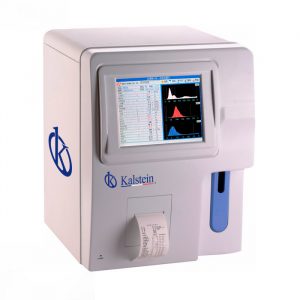Laboratory hematology analyzers have become a vital tool for many medical laboratories. These devices have become increasingly sophisticated and beyond the requirements of accuracy, reliability and price, laboratories have to consider the associated costs to incorporate and operate these tools in their facilities. It is important to understand not only the costs of laboratory equipment, but also the costs of maintenance, supply and associated processes.
Costs for purchasing a hematology analyzer include equipment cost, transportation and storage costs, installation costs, and negotiable costs associated with purchase. These may vary depending on the type of device selected. For example, some devices require extra investments in additional cards. This can significantly increase costs for businesses. There is also the cost of service and support contracts if you purchase one.
What are the other costs related to the use of hematology analyzers?
Maintenance of hematology analyzer devices can also be costly. These include the costs of spare parts, labor and necessary repairs. Even with a support contract, many companies charge a small additional fee for extra inspections, and spare parts can cost hundreds of dollars. Costs also vary by manufacturer.
For example, there are analyzers that require specialized reagents to function properly, and these additional costs have to be considered when selecting the device. In addition to the costs of purchasing and maintaining the devices, there are the costs associated with the process. These depend on the intended use the user wants to make of the equipment.
For example, if only the equipment is required for routine analysis, then fewer reagents and less time are needed to set up the equipment. If you need it for more tasks, then you need more reagents and you need to spend more time setting up your computer. Specific reagents for specific analyzes are often expensive, and the time and manpower required to introduce equipment may vary depending on the intended use.
Why is it important to take into account the operating costs of hematology analyzers?
On the other hand, other costs associated with laboratory hematology analyzers may include the training of professionals required for their use. It is important that professionals who have to operate the equipment receive adequate training to ensure that the instrument functions properly. Such training can also be costly, as it can take a long time for trained teachers.
Although laboratory hematology analyzers can represent a significant investment, they have a variety of uses in laboratories and offer a lot of benefits and solutions for users. When purchasing equipment, it is necessary not only to take into account the initial cost, but also the costs related to the maintenance, processes and management of the equipment.
Modern hematology analyzers not only help laboratories improve accuracy and agility, but also reduce the time and resources required for testing, offering a much lower total cost of ownership than older models. That’s why, although the initial price and associated expenses are important, it ultimately results in benefits, for the safety, reliability and speed with which samples are processed.
The cost-benefits of Kalstein hematology analyzers
The prices of the hematology analyzers of the manufacturer Kalstein are competitive. On the other hand, when you take into account all the analyzes that can be done with these devices, they make it a worthwhile investment. On the one hand it allows a quick management of samples, up to 35 per hour, and on the other hand up to 100,000 results can be stored, allowing a historical record of the analyzes carried out. For purchase, prices, other models and more technical details, you can check the links HERE and HERE.




